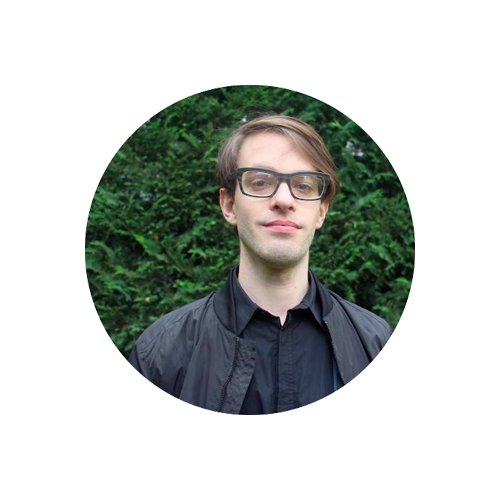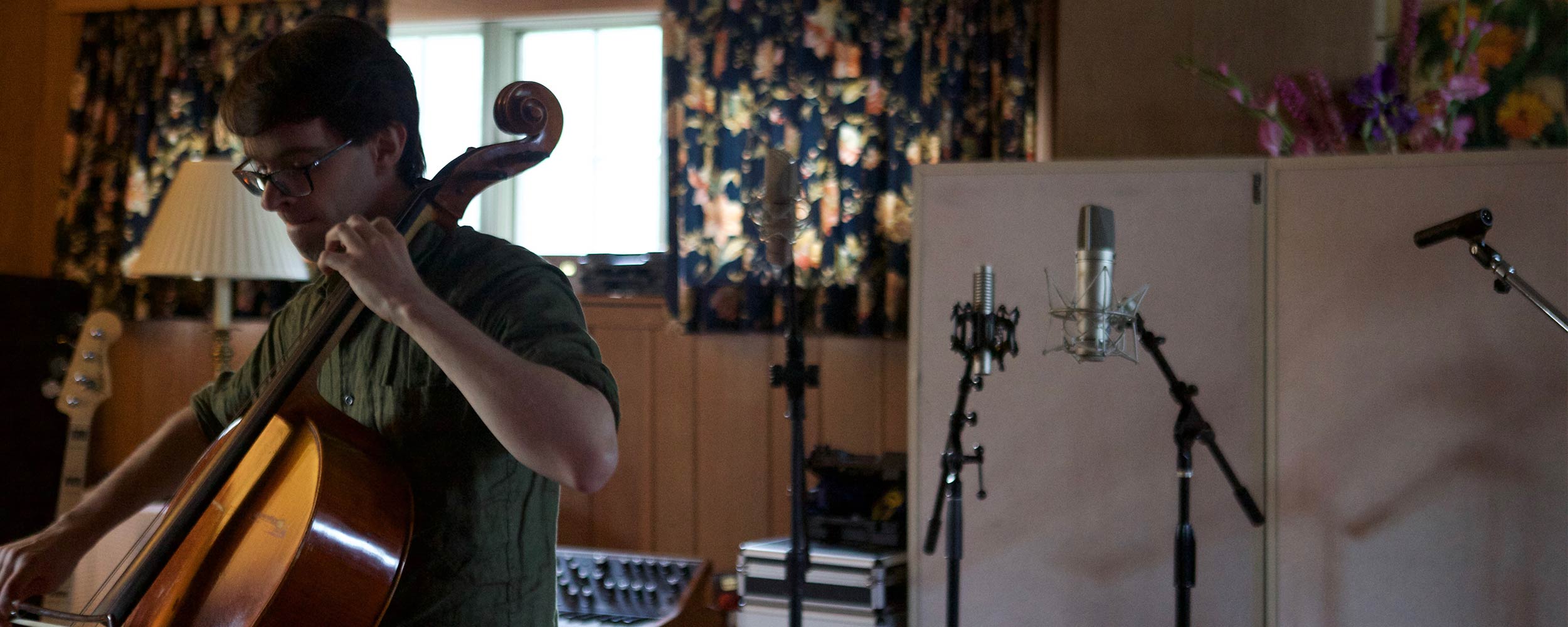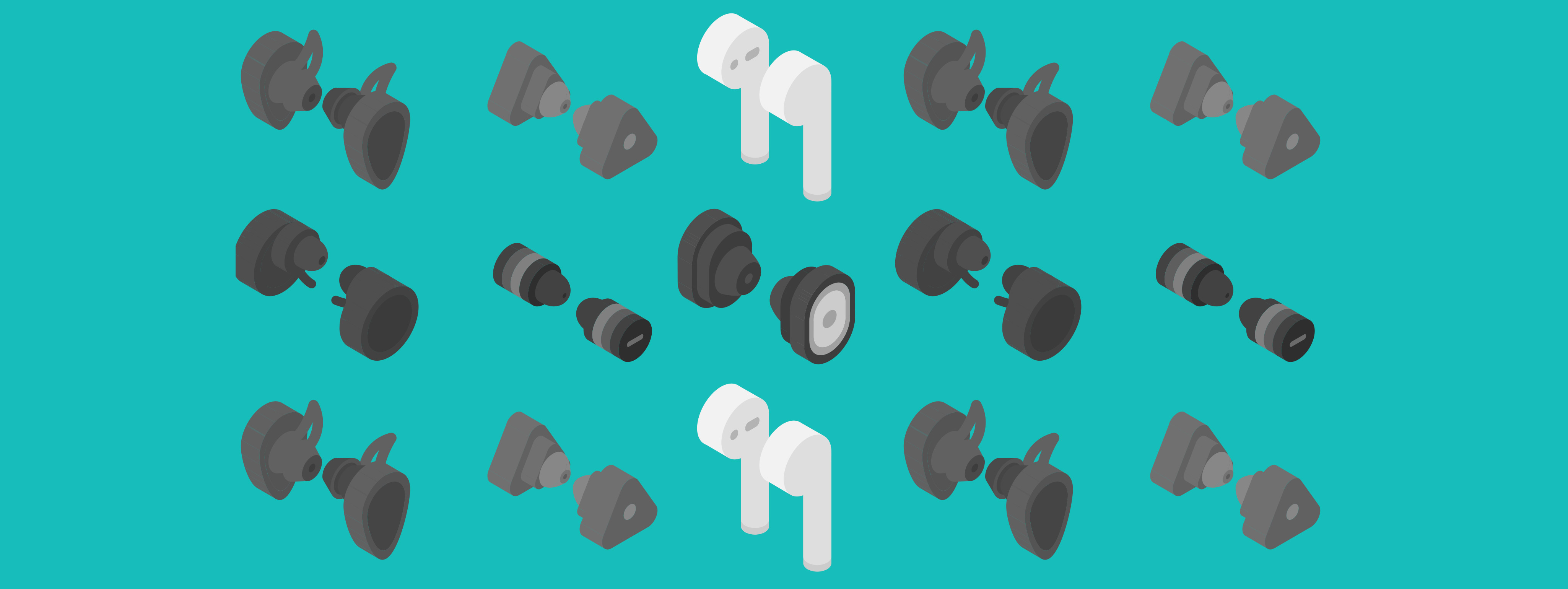Blog Post
Composing Classic Blue
Composing Classic Blue
Posted on
21 Jan 2020
Category
Audio Branding
21 Jan 2020 • Audio Branding

The Tone of Pantone
What does a color sound like? How do we create an analog between color theory and music theory; between synesthesia and synthesis? These are some of the unique questions our team set out to answer when creating the first-ever Sound of the Color of the Year with Pantone and Huge.For Audio UX®, every sonic branding initiative is an opportunity to collaborate. At the onset of a project, we focus heavily on the development of custom samples and recordings for our creatives to share and work with, ensuring a unique and ownable design approach — and the Sound of the Color of the Year was no different. Only, this time, the samples usually reserved for our internal teams have been made available to the public via our friends at online mastering and music sharing platform . Now, anyone can dig into the full sample pack and get a feel for the raw materials we utilize when seeking inspiration behind a branded audio design system.
Composer Spotlights
From an East Coast cottage to Kolkata, our composers from all around the globe worked together to create a unique sound that was true to Classic Blue. Below are exclusive interviews with some of the contributors to the composition.
Hien Nguyen
Hien is a Budapest-born producer, sound designer, composer, and singer with a growing list of impressive accomplishments and accolades. She usually collaborates with Audio UX® in the role of UX Sound Designer, but this time, we tapped her unique skill set for a series of vocal performances for the Sound of the Color of the Year sample pack. What she created became the vocal centerpiece of the audio aesthetic, a palette of graceful and mysterious performances that can be heard throughout VIVID NOSTALGIA and CLASSIC BLUE.

How long have you been singing/what's your musical background?Hien: My parents told me that I had been singing since I started to speak. Music has always been an essential part of my life. I started to play the piano and the violin at the age of seven. Growing up, I wanted to spend more and more time with music. By the time I was 16, I started to write songs and realized I wanted to produce them too. After getting into music production, I fell in love with electronic music and wanted to learn how to make my own sounds. I graduated from Berklee College of Music last May with a degree in Electronic Production & Design and became a sound designer.What was your overall approach when creating audio for Color of the Year?Hien: I wanted to create something soulful, ethereal, and not too conventional at the same time. I used my favorite reverbs, some delay with granular synthesis, pitch/formant shifting, and some harmonic distortion. I recorded everything in my bedroom.Favorite sample from the sample pack?Hien: My favorite sample from the pack is .Keep up with Hien over at her Instagram

How long have you been singing/what's your musical background?Hien: My parents told me that I had been singing since I started to speak. Music has always been an essential part of my life. I started to play the piano and the violin at the age of seven. Growing up, I wanted to spend more and more time with music. By the time I was 16, I started to write songs and realized I wanted to produce them too. After getting into music production, I fell in love with electronic music and wanted to learn how to make my own sounds. I graduated from Berklee College of Music last May with a degree in Electronic Production & Design and became a sound designer.What was your overall approach when creating audio for Color of the Year?Hien: I wanted to create something soulful, ethereal, and not too conventional at the same time. I used my favorite reverbs, some delay with granular synthesis, pitch/formant shifting, and some harmonic distortion. I recorded everything in my bedroom.Favorite sample from the sample pack?Hien: My favorite sample from the pack is .Keep up with Hien over at her Instagram
Vasundhara Gupta
For Vasu, incorporating her Indian classical music training into her compositions is a passion. She is an accomplished performer, songwriter, singer, sound designer, and composer who began lending her unique talents to sonic branding initiatives across Audio UX® in 2019.For the Sound of the Color of the Year, Vasu developed a deep vocal narrative, providing a bevy of distinctive samples that became the backbone of the 30-channel immersive music played during the Pantone Color of the Year reveal event at ARTECHOUSE.

How long have you been singing/what's your musical background?Vasu: I've been told that I've been singing since I was a five-year old! My musical background is from Kolkata, India, where I grew up. I've been trained by various teachers/gurus in North-Indian classical or 'Hindustani' music. I enjoyed nothing as much as I did to sing and create music, and that realization led me to study at Berklee College of Music where I learnt about other styles, approaches, techniques etc., and continue to, everyday!What was your overall approach when creating audio for Color of the YearVasu: The creative brief I got was all wrapped up into two words - Vivid Nostalgia. I lived with [that] in mind up until after I went into the session to record. I broke down the two words individually and then together as one. “Nostalgia” brought me to very happy, calm, carefree, places in my memory that connected with my childhood. I broke it down to the very core - the sounds one hears when they’re first born, or even before they’re born. The “vividness” came from the details in singing, in melody and/or texture.What was your approach to the vocals themselves? Did you use any specific techniques?Vasu: I wanted to explore my feelings connected with “Vivid Nostalgia” and went on with the idea of a newborn’s experience of sound that everyone can, either consciously or subconsciously, connect with. So a lot of samples I recorded had to do with spoken textures, nonsense-syllables, whispers, yawns, etc. I tried to be as elemental and raw about it as I could.All vocals were recorded at a studio in Kolkata.Favorite sample from the sample pack?Vasu: I am a huge fan of the cello. It’s one of my favourite instruments, so I might be biased... I think all the cello samples are great—especially and . The recording process for the instrument sounds very exciting too!Keep up with Vasu over at her Instagram

How long have you been singing/what's your musical background?Vasu: I've been told that I've been singing since I was a five-year old! My musical background is from Kolkata, India, where I grew up. I've been trained by various teachers/gurus in North-Indian classical or 'Hindustani' music. I enjoyed nothing as much as I did to sing and create music, and that realization led me to study at Berklee College of Music where I learnt about other styles, approaches, techniques etc., and continue to, everyday!What was your overall approach when creating audio for Color of the YearVasu: The creative brief I got was all wrapped up into two words - Vivid Nostalgia. I lived with [that] in mind up until after I went into the session to record. I broke down the two words individually and then together as one. “Nostalgia” brought me to very happy, calm, carefree, places in my memory that connected with my childhood. I broke it down to the very core - the sounds one hears when they’re first born, or even before they’re born. The “vividness” came from the details in singing, in melody and/or texture.What was your approach to the vocals themselves? Did you use any specific techniques?Vasu: I wanted to explore my feelings connected with “Vivid Nostalgia” and went on with the idea of a newborn’s experience of sound that everyone can, either consciously or subconsciously, connect with. So a lot of samples I recorded had to do with spoken textures, nonsense-syllables, whispers, yawns, etc. I tried to be as elemental and raw about it as I could.All vocals were recorded at a studio in Kolkata.Favorite sample from the sample pack?Vasu: I am a huge fan of the cello. It’s one of my favourite instruments, so I might be biased... I think all the cello samples are great—especially and . The recording process for the instrument sounds very exciting too!Keep up with Vasu over at her Instagram
Robert Karpay
Robert Karpay is a multi-instrumentalist, composer, and sound designer with a penchant for Shostakovich and a love for all things game music. We asked Rob to accompany us on our journey to The Cottage, where he wowed us with a remarkable series of cello performances and creative approaches that we were lucky enough to capture for the Sound of the Color of the Year. The sound of Robert’s cello became the centerpiece of the Official Classic Blue Sample pack, and his brilliant passages show up in VIVID NOSTALGIA, CLASSIC BLUE and the official event music played during the reveal (which he also co-composed).

How long have you been playing cello/what's your musical background?Rob: I’ve been playing the cello for almost 20 years. I grew up studying composition and piano but I didn’t start playing the cello until playing an orchestral instrument was a school requirement. My compositional journey actually began with a non-existent video game that I was obsessively drawing; I dreamt up the whole plot and even thought about gameplay mechanics, but it wasn’t until I started writing music for the game that I realized the musical side would become my main focus. One thing led to another and I found myself with a Master’s in Music for Classical Composition.To this day, I love writing for games (Super Slime Arena, This World Falls, Floppy and the Sleepy Planet), as well as various UX sound and music projects. I’m currently composing a fully-orchestral symphonic work of original music for video game bosses. You know, normal free down-time stuff. Oh and I also occasionally work as a session cellist, which is why I’m here now!What was your approach to the cello specifically? Did you use any specific techniques?Rob: When AUX told me that they were using B minor as the tonal center for the Color of the Year sample pack, I immediately tuned my cello so that the bottom two strings matched the “I” and “V” of the key. This allowed me to achieve the same resonance on those strings that I would if the tonal center were C minor, which I think is important for the idea of Classic Blue invoking a restful state in the listener. It also allowed me to perform some really beautiful and unique melodic shapes with cello harmonics that I couldn’t have done otherwise - see “Cellofade Ambient” and “Unchained Refraction” in the One Shots.What was your overall conceptual approach when creating audio for Color of the Year?Rob: When we recorded, it was that time where afternoon descends into twilight, and what I really felt the color wanted was a warm blanket of sustained cello chords. So for a while, I had the Audio UX® team record me playing long tones that we could layer on top of one another. On paper, it’s not really anything special, but it’s something that I think freed-up the composers to treat my cello like a keyboard. This really came to life within the reveal event music, which I actually helped compose as well. Working with the sounds we made during the sampling session was a unique experience that allowed me to revisit the cozy vibes I was feeling during the session, and everything I wrote for the reveal event came from that place of warmth and rest.Favorite sample from the sample pack?Rob: , , and are my favorite cello samples that I played on. “Nightside Abstract”, which is one of the first things you hear in VIVID NOSTALGIA is easily my favorite though. I guess the more time I spend answering this question, the more “favorites” I’ll have, so I’ll stop there. I really love the work we did for this project and it was a beloved and treasured experience to collaborate.Anything else you want to add? Anecdotes? Favorite moments from the recording session?Rob: The entire session felt really comfortable and creatively free. We were in this gorgeous environment, a cozy cottage in the woods, flooded with golden warm sunlight, physically and mentally away from all the worries in the world. One moment I was tracking a kind of long-form improvisation with John and I took a break while he was manipulating what I had just played through a series of modular synths. I looked around the room at the scenery, breathed in the inventive textures John was performing, and had one of those moments that musicians have where the universe seems to be placing a friendly hand on your shoulder saying, “Hey, remember why you wanted to be a musician? Here’s a little treat to remind you.” I totally forgot this was a job, because it sure didn’t feel like it.Keep up with Rob via his website,

How long have you been playing cello/what's your musical background?Rob: I’ve been playing the cello for almost 20 years. I grew up studying composition and piano but I didn’t start playing the cello until playing an orchestral instrument was a school requirement. My compositional journey actually began with a non-existent video game that I was obsessively drawing; I dreamt up the whole plot and even thought about gameplay mechanics, but it wasn’t until I started writing music for the game that I realized the musical side would become my main focus. One thing led to another and I found myself with a Master’s in Music for Classical Composition.To this day, I love writing for games (Super Slime Arena, This World Falls, Floppy and the Sleepy Planet), as well as various UX sound and music projects. I’m currently composing a fully-orchestral symphonic work of original music for video game bosses. You know, normal free down-time stuff. Oh and I also occasionally work as a session cellist, which is why I’m here now!What was your approach to the cello specifically? Did you use any specific techniques?Rob: When AUX told me that they were using B minor as the tonal center for the Color of the Year sample pack, I immediately tuned my cello so that the bottom two strings matched the “I” and “V” of the key. This allowed me to achieve the same resonance on those strings that I would if the tonal center were C minor, which I think is important for the idea of Classic Blue invoking a restful state in the listener. It also allowed me to perform some really beautiful and unique melodic shapes with cello harmonics that I couldn’t have done otherwise - see “Cellofade Ambient” and “Unchained Refraction” in the One Shots.What was your overall conceptual approach when creating audio for Color of the Year?Rob: When we recorded, it was that time where afternoon descends into twilight, and what I really felt the color wanted was a warm blanket of sustained cello chords. So for a while, I had the Audio UX® team record me playing long tones that we could layer on top of one another. On paper, it’s not really anything special, but it’s something that I think freed-up the composers to treat my cello like a keyboard. This really came to life within the reveal event music, which I actually helped compose as well. Working with the sounds we made during the sampling session was a unique experience that allowed me to revisit the cozy vibes I was feeling during the session, and everything I wrote for the reveal event came from that place of warmth and rest.Favorite sample from the sample pack?Rob: , , and are my favorite cello samples that I played on. “Nightside Abstract”, which is one of the first things you hear in VIVID NOSTALGIA is easily my favorite though. I guess the more time I spend answering this question, the more “favorites” I’ll have, so I’ll stop there. I really love the work we did for this project and it was a beloved and treasured experience to collaborate.Anything else you want to add? Anecdotes? Favorite moments from the recording session?Rob: The entire session felt really comfortable and creatively free. We were in this gorgeous environment, a cozy cottage in the woods, flooded with golden warm sunlight, physically and mentally away from all the worries in the world. One moment I was tracking a kind of long-form improvisation with John and I took a break while he was manipulating what I had just played through a series of modular synths. I looked around the room at the scenery, breathed in the inventive textures John was performing, and had one of those moments that musicians have where the universe seems to be placing a friendly hand on your shoulder saying, “Hey, remember why you wanted to be a musician? Here’s a little treat to remind you.” I totally forgot this was a job, because it sure didn’t feel like it.Keep up with Rob via his website,
Behind The Scenes
New York is infinitely inspiring, but keeps its silence and tranquility well-hidden. To capture the color, we knew we needed to be where quiet and twilit sky was plentiful. So we found our way to a sleepy cottage west of the city, and west of the noise.The quiet and mostly-unoccupied lodge, built sometime in the 1800s, sits squarely at the edge of the property, marking the end of a winding road that leads away from the hazy city skyline, which can sometimes be seen flashing through the treetops at dusk.Inside, the cottage is snug and warm—baring wide, flat wooden floorboards that stretch from wall-to-wall, occasionally meeting with stone at the base of the fireplace and stairs. Running your hand across its smooth accents reveals a curved asymmetry that seems to invigorate sound in just the right way. The stones hold secrets. The echoes of lost conversations make their silent mark, betraying no evidence of the 1000’s of winter nights spent beside them. There are rumors of hauntings.The living room on the ground floor is where we made camp. Long and open, the sound of the room is perfect for capturing the warmth of resonant instruments like drums and strings. A strange creative energy hangs in the air. There, in the quiet we found at the burgeoning cusp of twilight, we hit record. Brilliant composer/cellist Robert Karpay played his cello and John Kallen manipulated through a diffused glow of modular synth processors and effects.


